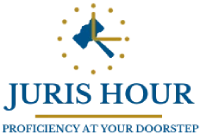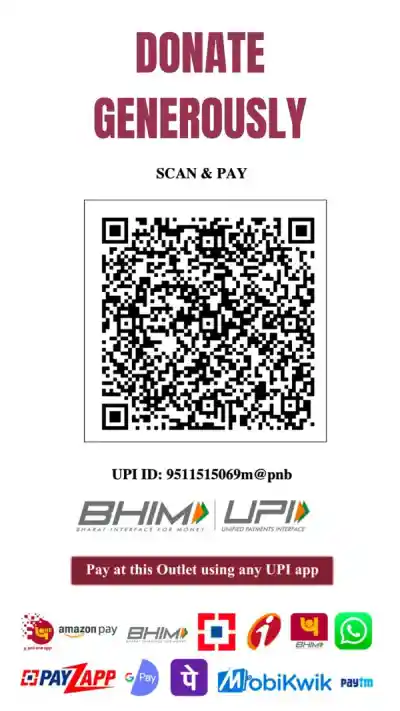Costao Fernandes, a junior officer in Marmagoa Custom House gathered secret intelligence that a huge quantity of gold was going to be smuggled into the country. The landing would take place near Fartade beach, one of those lonely beaches of Goa.
He decided to form a one-man-army to fight the smugglers of Goa. If people think that one-man-armies are the figments of fevered imagination of Hollywood producers, they are very wrong. Costao is a real figure.
Churchill Alemao started his life as tea boy and rose to become the Chief Minister of the state of Goa. Democracy at its very best. Ciabro Alemao, Joaquim Alemao, late Alvarnez Alemao, all brothers of Churchill had equally humble beginnings but rose to become the rich and famous of Goa. Capitalism and its virtues.
Anthony Jon Rodrigues is an employee of late Alvarnez. He works as a tax collector. He did not rise to become anything. He was only 29 years old. Still young.
Subhash Pandey, a non-descriptive person works for a construction company engaged in constructing a beach resort called Verca Beach Resort close to Carmona Beach. He drives a Maruti car belonging to one of Churchill’s brothers. He did the vanishing trick after the incident and surfaced to reply to the show-cause notice issued to him amongst others. These then are the dramatists personae.
Churchill, Ciabro, Joaquim, Rodrigues, and Subhash Pandey are some of the persons penalised Under Section 112 (a) and (b) of the Customs Act ranging from Rs. 50 lakhs to Rs. 5 lakhs by the Commissioner. Hence these appeals by them.
Events Which Lead To Adjudication Proceedings
On the night of 15th May, 1991, the one man army was keeping a nightly vigil on Fartade Beach from a secret place. He was pointedly asked during his cross-examination as to where the secret place was. He refused to divulge it.
Some places have to remain secret. They would be useful for other officers to keep similar vigils if they are so inclined. Costao observed Joaquim, Ciabro, and Alyarnez and their associates coming to the site of construction around 8:30 pm in various vehicles on that night.
They proceeded towards the beach and after a while left the place. Nothing much happened that night. The officer continued to keep his lonely watch. Next day morning (16th May, 1991), he saw Churchill, Ciabro, and Joaquim and two to three others visiting the site of construction. Costao thought that no smuggler, however influential, would dare to land contraband goods in broad daylight so he went home. He was wrong.
Around 10:30 am, he received a call that a great deal of activity was going on at Carmona beach. The lone ranger hurled himself in the direction of the beach on his motor cycle. He noticed Ciabro standing near Luis Bar close to the beach. At that time, a white Contessa car and a Maruti car were parked near the beach.
Costao saw four heavy battery-type boxes being loaded in the car under the supervision and directions of Alvavnez. He also saw one such box being loaded in the Maruti car driven by Subhash Pandey. Costao decided to follow the vehicle which had more boxes and therefore, went after the car. On the way, he instructed a good Samaritan to inform his wife (Costao’s) to telephone the Customs office about his movements and proceeded in pursuit of the car.
Costao intercepted the car at Verca village, jumped into the front seat and requested the driver, Alvaniez to stop the vehicle (such politeness). The latter did not oblige, there was a scuffle, a knife was pulled by Alvaniez and in the ensuing struggle, Alvaniez was grievously hurt. The officer took out the ignition key, opened the dickey, managed to open one of the battery-type boxes, pulled out a gold biscuit, showed it to the crowd which had gathered by then and requested for help and for some water.
Neither of which was given. So he threw the gold biscuit back into the dickey, locked it, deflated the tires of the vehicle, threw the key away, and walked away in his blood-stained clothes in the general direction of one Mrs. Antonite’s house (these Customs officers live rather dangerously). Meanwhile, Alvarnez was wasted.
It is worthwhile to remember that the above narration of events is solely based on the statement of Costao Fernandez recorded Under Section 108 of the Customs Act and the affidavit filed by him before the CESTAT. There are however witnesses to the struggle in the front seat of the car and to the fact that Costao was attempting to open the dickey. After he left the scene, he was not privy to the events that took place later. There were 3 witnesses who saw the events that took place after Costao’s departure from the scene. The following narration is based on the evidence tendered by the three, Vincy Soares, Baptista Fernandes, and Sebastian Fernandes. Their statements were recorded Under Section 108 of the Customs Act.
Within 10-15 minutes of the departure of Costao, the Churchill brothers arrived on the scene, the first to come it appears is Joaquim Alemao and his associates. They had one look at the driver and proceeded to force open the dickey, removed at least two battery-type boxes from the dickey one of which was carried away by one Roy Miranda along with another person and the second one by Rodrigues in the general direction of Verca village. T
here are witnesses who saw these persons carrying the boxes on the scooters, one of which was later traced and seized. The said witnesses say that Ciabro and Churchill were also present when the boxes were being removed from the dickey. The brothers also attended on the wasted person and took him away from the car. The three also say that Costao identified himself as a Customs officer after he got down from the front seat on blood stained clothes and was trying to fiddle with the dickey before he left the scene.
Thus there appears to be some discrepancy between Costao’s version and what of the witnesses.
Costao took out a gold biscuit from the battery type box and showed it to the crowd, whereas the witnesses say that they have seen him only fiddling with the dickey. The Commissioner relied on the version given by these three persons even though they did not turn up for cross examination before him. The Churchill brothers themselves have denied removing any boxes from the dickey of the car.
During the course of investigation, the Customs officers recorded statements of several persons. There are witnesses to the fact that two battery-type boxes were carried on the scooters. The owner of Luis Bar testified that Ciabro Alemao came near Carmona beach around 10:30 am on 16.5.1991 and went towards the beach before he left the place, These versions coupled with the statement of Costao Under Section 108 were the main planks on which the Commissioner’s case rested.
A side show was going on when the Customs were investigating the alleged offence committed by the Churchill brothers and others. Costao Fernandez was being prosecuted for killing Alvarnez, the investigation into which was done by the Criminal Bureav of Investigation (CBI). The CBI’s version was that Costao killed Alvarnez- because of some old grudge arising out of some reward money and the story that Costao was intercepting a car laden with gold was false; that there was no gold in the car and that Costao did not intercept the car under the powers vested with him Under Section 106 of the Customs Act.
Section 155 of the Customs Act affords protection to a Customs officer against civil and criminal liabilities if such an officer is involved in discharging his functions entrusted to him under the Customs Act. The officer was claiming this protection before the trial court. The court rejected Costao’s plea and held that there was no evidence to say that there was any gold at all in the can. The court committed him to the sessions to undergo trial for an offence punishable Under Section 302 of the Indian Penal Code (IPC).
Supreme Court’s View
Costao did not succeed in appeal against this order. The matter was pursued in the Supreme Court. The apex court observed thus “A valiant and a dutiful Customs officer risked his life to fight the mighty underworld of smugglers unarmed and single-handedly. And see! He succeeded after hard chase on his motor cycle – smuggler being in a car. The result was smuggling of gold worth Rs. 8.00 crores was prevented. The reward? He has been made to face a prosecution Under Section 302 of the IPC at the behest of the CB1 who is brought hurriedly and for undisclosed reasons to investigate…”
The apex court examined the provisions of Section 106 which empower an officer of customs to stop and search conveyances and held that Costao was attempting to stop a vehicle in which contraband gold worth Rs. 8.00 crores was being carried. The Supreme Court after passing some strictures against all concerned quashed the prosecution against Costao and allowed his appeal before it.
This decision of the Supreme Court was reported (82 ELT 433 S.C) and was passed on 20-2-1996. The order of the Commissioner was passed on 14-10-1994. The evidence before theSupreme Court and the Commissioner was identical. The Supreme Court concluded that there was gold worth Rs. 8.00 crores in the car intercepted by Costao. Such a conclusion was arrived at on the basis of the record maintained in the Custom House, the statement of Costao Fernandes and the statements of persons who saw the boxes removed from the dickey of the car. The apex court was aware that except Costao, nobody else saw the gold nor any gold was seized subsequently. Despite that, the court was satisfied that there was gold in the battery-type boxes kept in the dicky. This Tribunal has the benefit of the decision of the apex court, the Commissioner did not.
The Commissioner built his case against Churchill, Ciabro, Joaquim, Rodrigues and Subhash Pandcy who are the appellants before us on the basis of the version given by Costao and Vincy Soras, Baptista and Sebastian Fernandes. The last three named did not appear for cross-examination He penalised the persons Under Section 112 (a) and (b). and confiscated the car, the Maruti, and a scooter all three vehicles having been used in the carriage of smuggled goods Under Section 115 (2) of the Customs Act. Hence, these appeals.
The Commissioner confiscated the vehicles in which the alleged gold was carried Under Section 115 (2) of the Customs Act. No serious challenge is made against it. The liability of the vehicles to confiscation has to be upheld once we hold that the boxes contained contraband.
The Commissioner imposed a penalty of Rs. 50 lakhs on Churchill Alemao, Rs. 30 lakhs on Joaquim Alemao. Rs. 15 lakhs on Ciabro Alemao and Rs. 5 lakhs on Anthony Jon Rodrigues, Rs. 5 lakhs on Subhash Pandey for their various acts of commission and omission Under Section 112(a) and (b). While doing so the Commissioner analysed the role of each of the persons. He holds that these persons not only handled the contraband but also took active part in smuggling. That’s the reason why he cites both Sections 112(a) and (b) of the Customs Act. We do not see any infirmity in his finding.
Mariya is the Senior Editor at Juris Hour. She has 5+ years of experience on covering tax litigation stories from the Supreme Court, High Courts and various tribunals including CESTAT, ITAT, NCLAT, NCLT, etc. Mariya graduated from MLSU Law College, Udaipur (Raj.) with B.A.LL.B. and also holds an LL.M. She started as a freelance tax reporter in the leading online legal news companies like LiveLaw & Taxscan.



